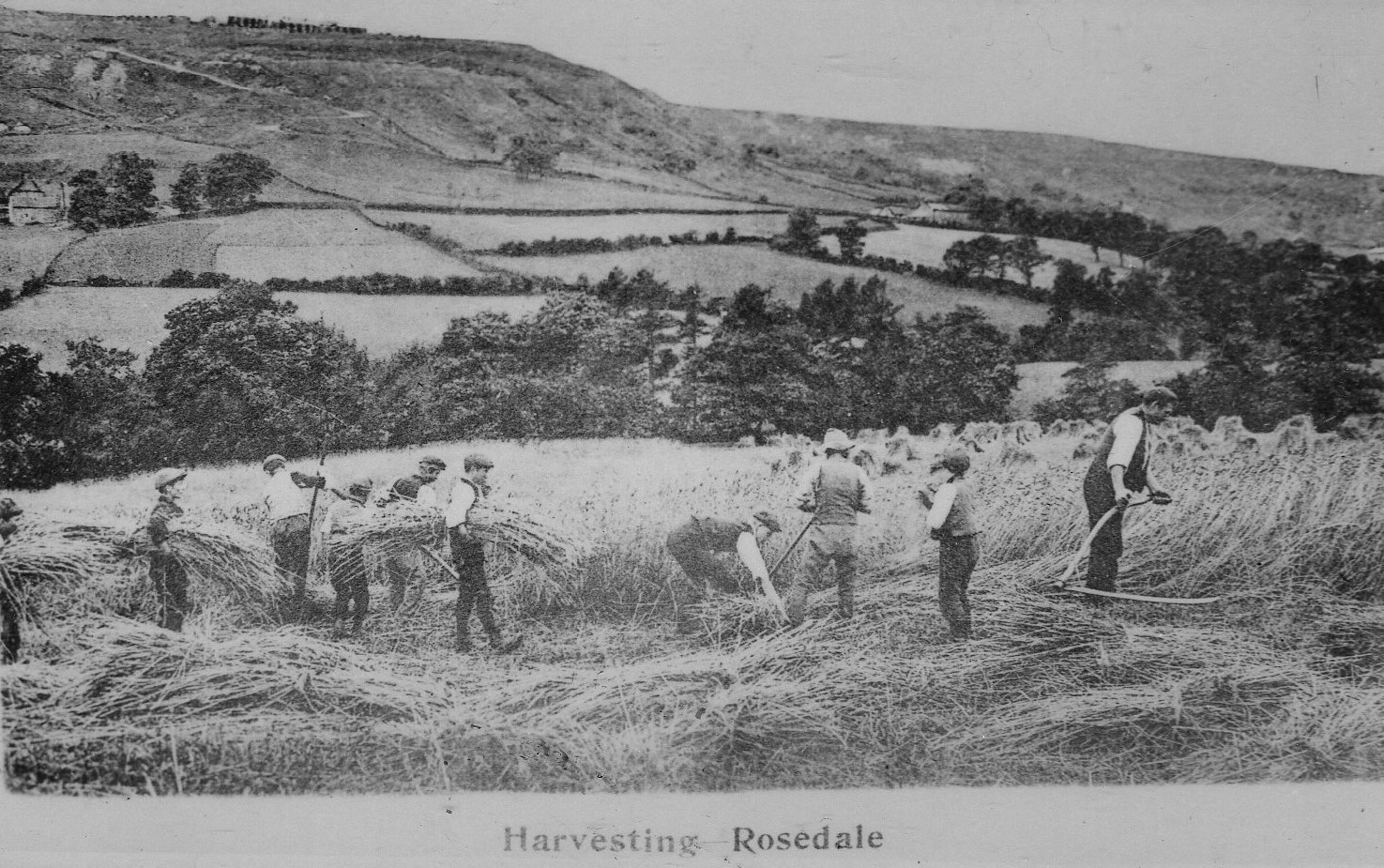Farming
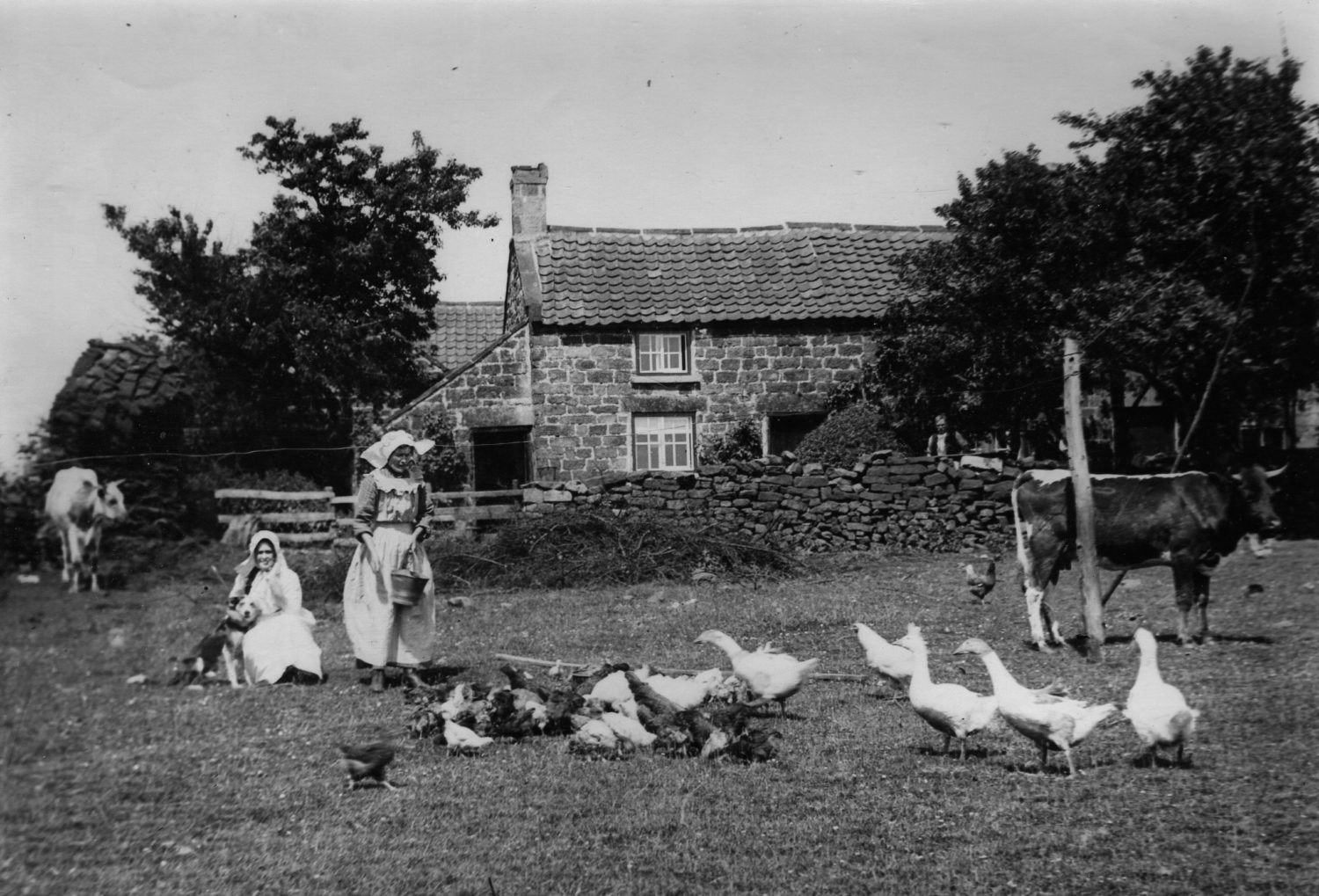
Items within the collection
Horse drawn ploughs were the only method of ploughing a field prior to the popularisation of tractors. The backdrop to this photograph is Chimney Bank in Rosedale, and the iconic chimneys can still be seen at the top of the hill.
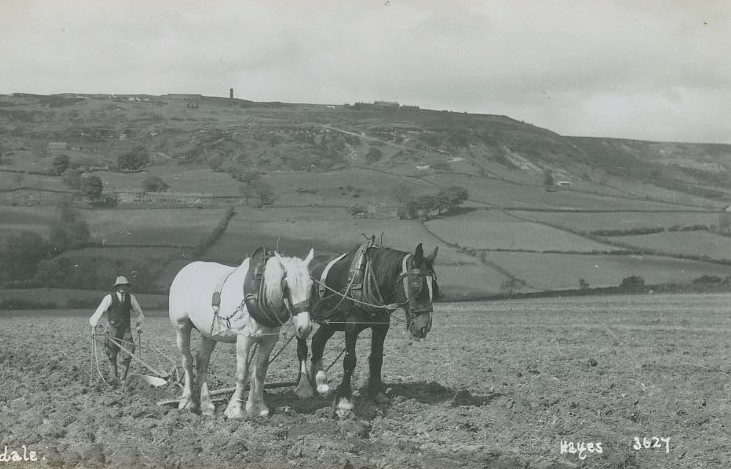
Sheep washing involved fully immersing the sheep in water, usually to clean them in the weeks leading up to shearing. Many villages and parishes had traditional sites for sheep washing, usually in local rivers or at natural pools. Here we see the site used by local farmers at Hutton-le-Hole.
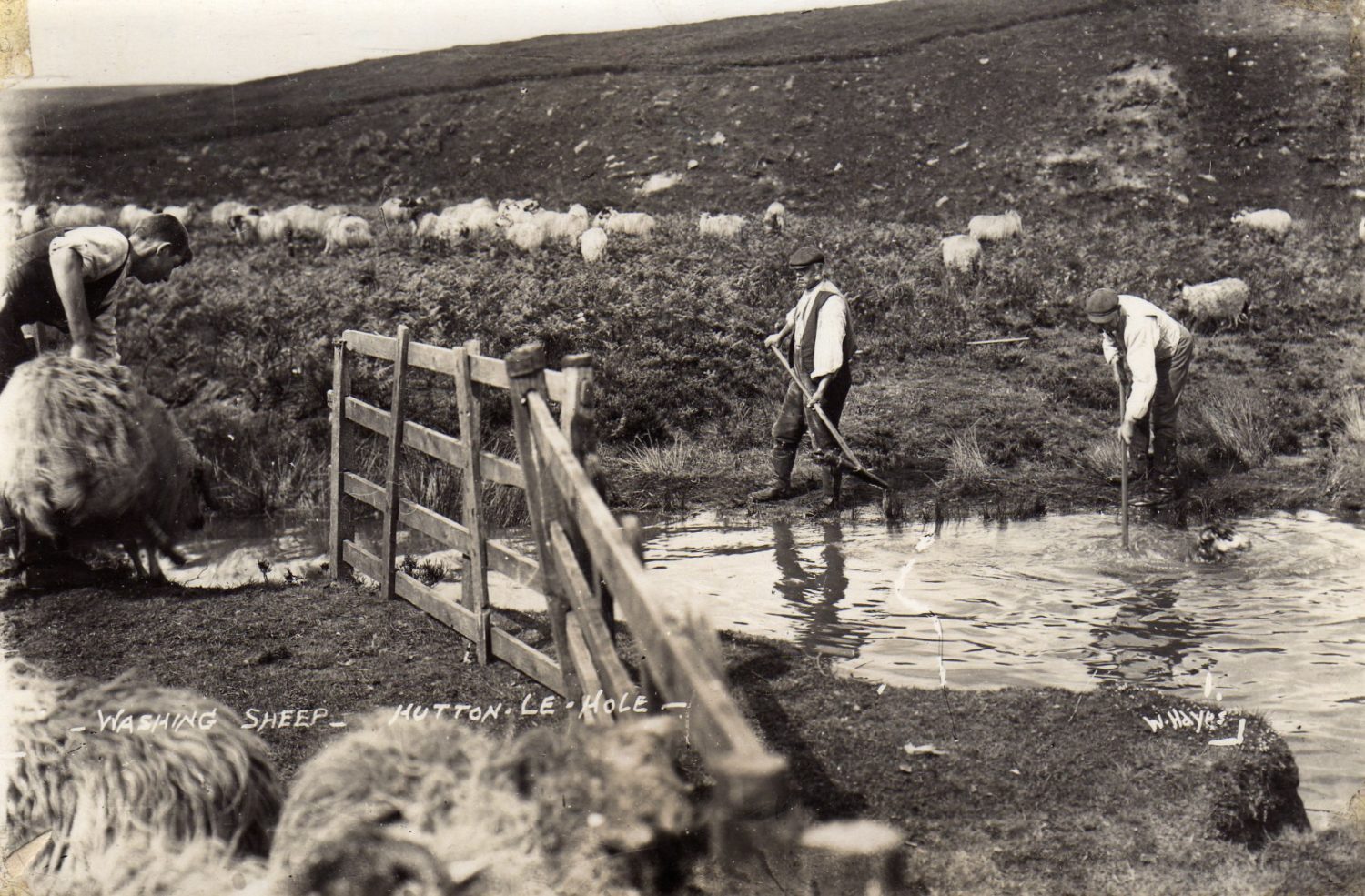
A farm worker drives his cattle through the main street at Harome. St Saviour’s Church can be seen in the distance.
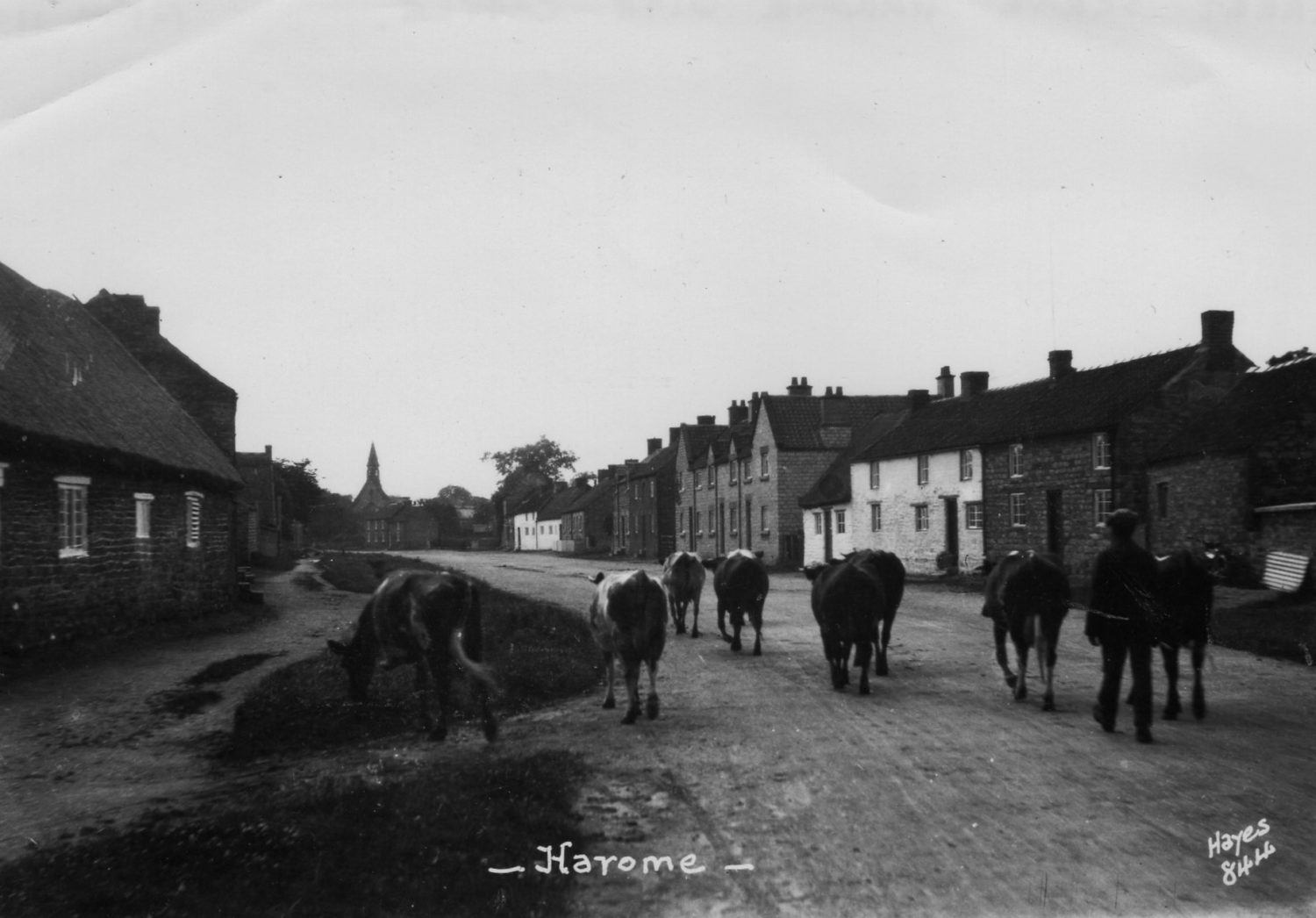
Five men are shown in the process of dipping sheep. This meant plunging the sheep into water that contained pesticides, in order to protect them against insects such as ticks, lice and blowfly. The dip could take the form of a permanent in-ground structure or be a mobile assembly, as can be seen here.
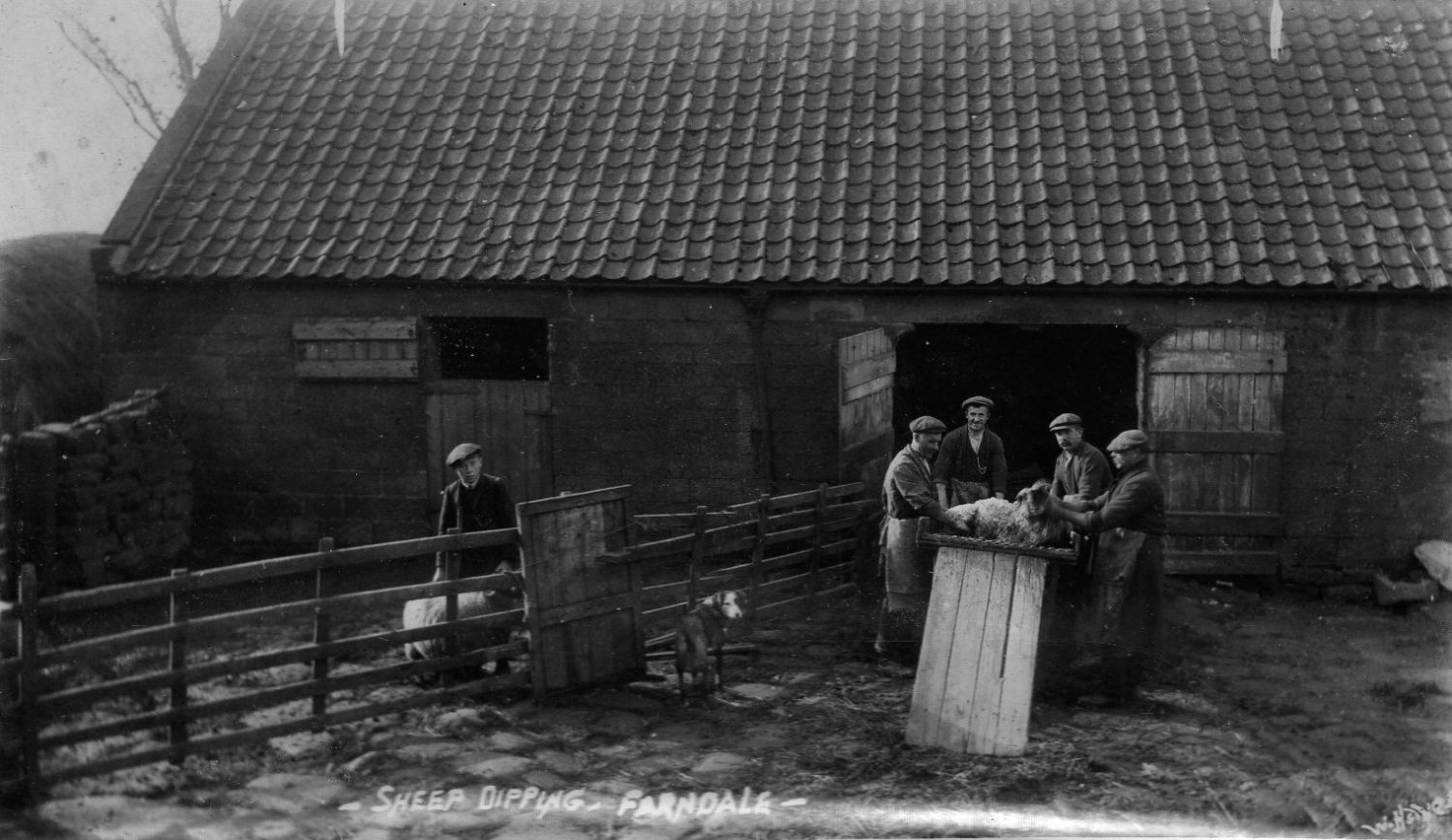
‘Allowance time’ was gladly accepted by the hard workers at Oxclose Farm, pictured here during a Threshing Day. Threshing is the process of separating corn from its stalks. The stalks can then go on to be straw, animal feed, bedding or thatching. The corn tended to go on to be ground into flour.
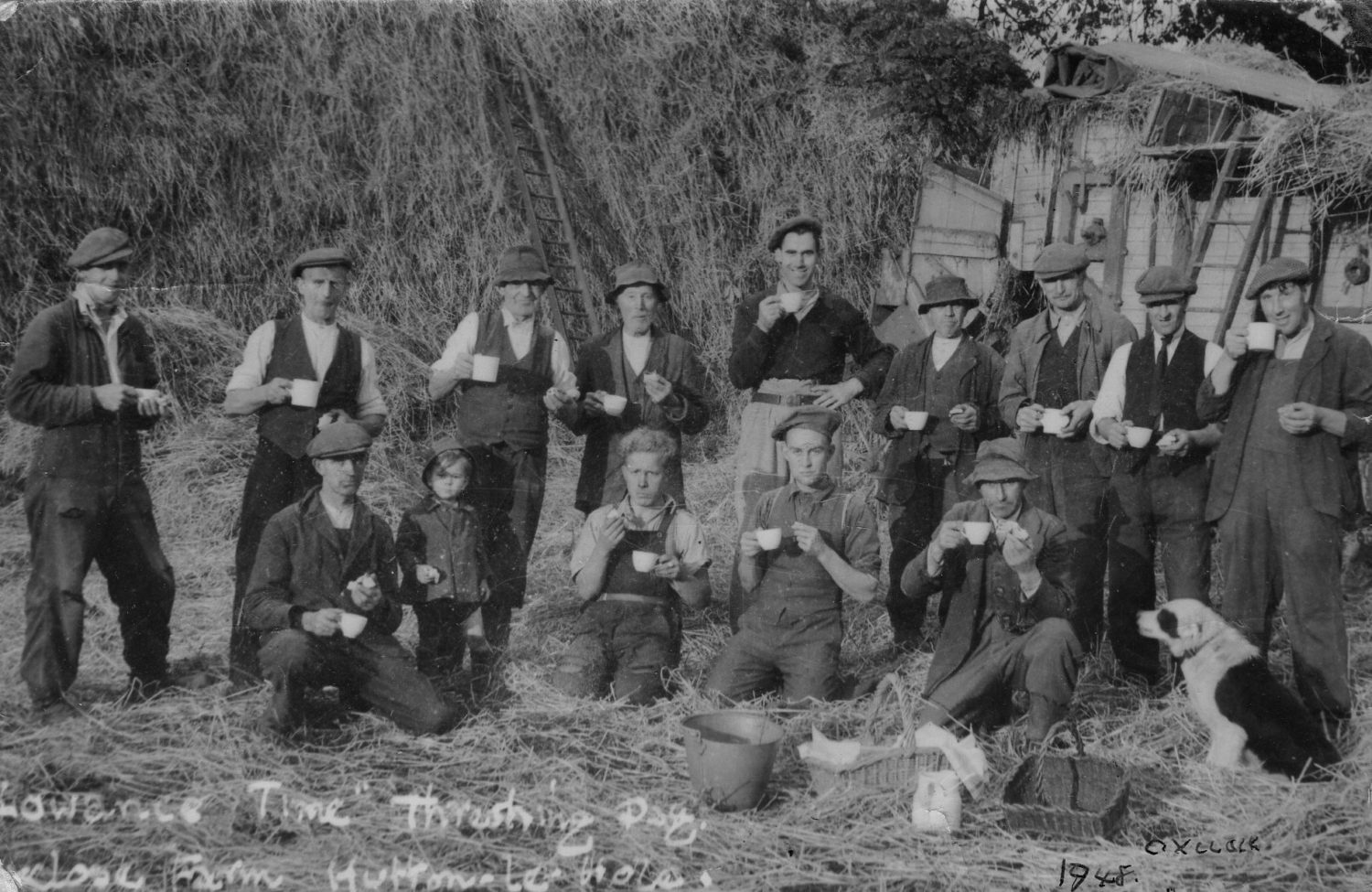
Two white shire horses are pictured here ploughing a field that looks out onto Ryedale and the Vale of Pickering. They are followed by a man working the plough. One aspect of this photograph that shows it was perhaps staged is the horses’ feet – working shire horses would have had their wispy legs trimmed to stop them getting too muddy.
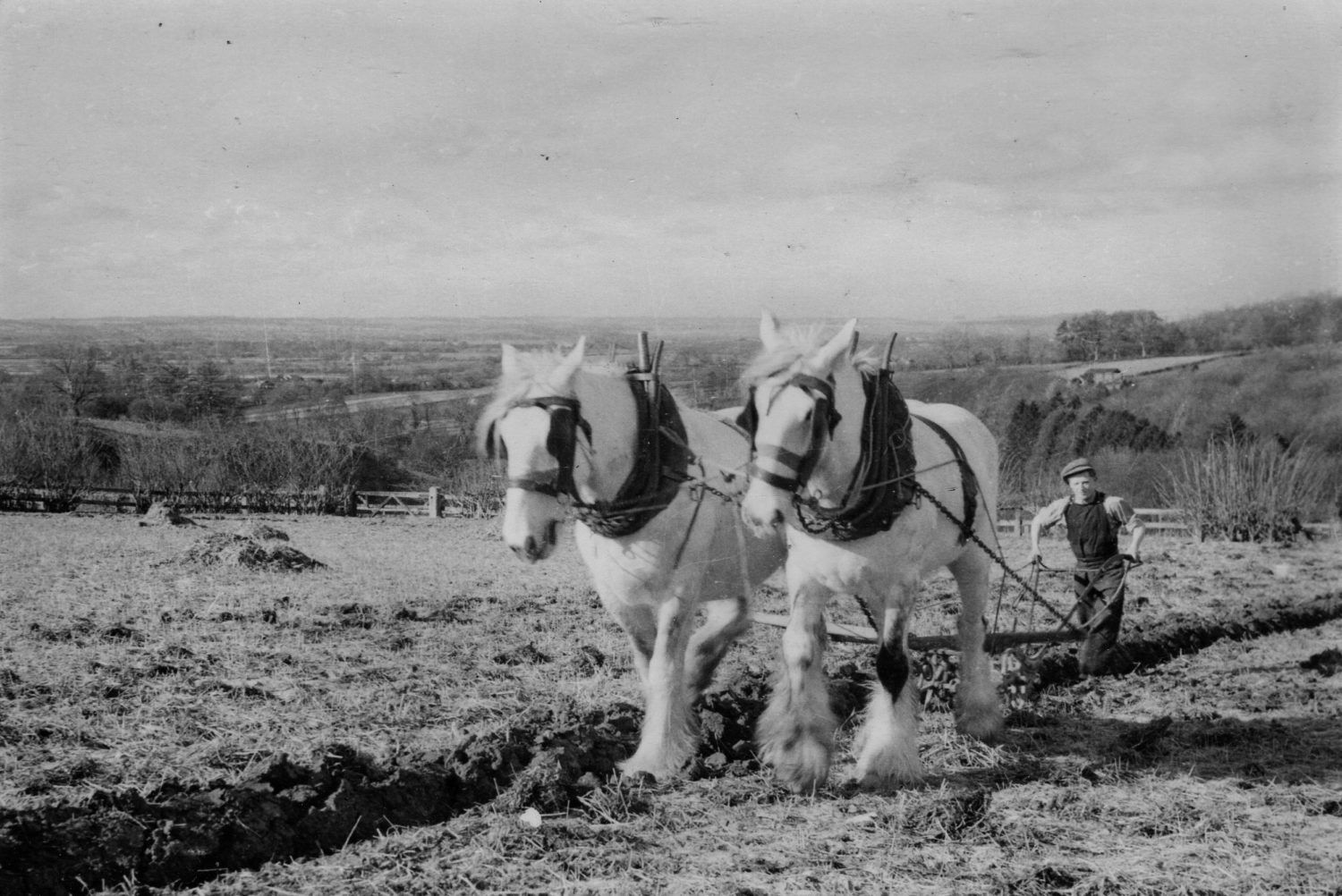
Mechanical shearing was developed towards the end of the nineteenth century, but the practice of shearing by hand continued to be used. It was especially prevalent in smaller flocks or in particularly rural areas. Our sheep on site receive their annual fleece-cut by hand.
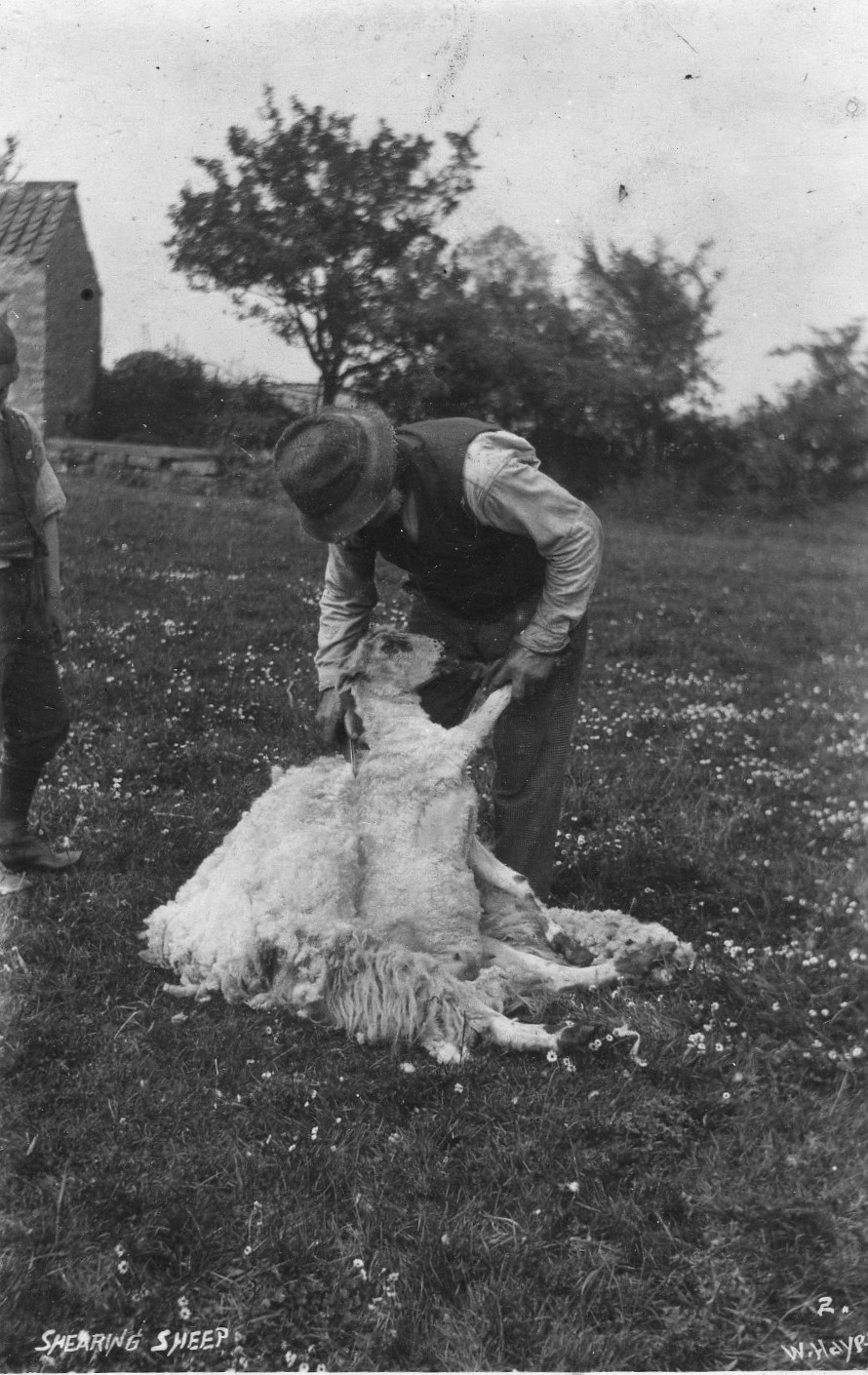
This photograph provides an insight into daily life at Harland Farm. Everyone would have been expected to be involved in the running of the family farm, it was not solely the role of the man of the house. Traditionally, women often helped in the dairy with cheesemaking. Even the children would have been expected to help with farm chores, such as feeding the hens and geese.

Milking by hand was the only option up until the late nineteenth century, when the process was mechanised. However, it took a number of decades for this to become the norm, and for rural areas with small herds the practice of hand milking continued well into the twentieth century.
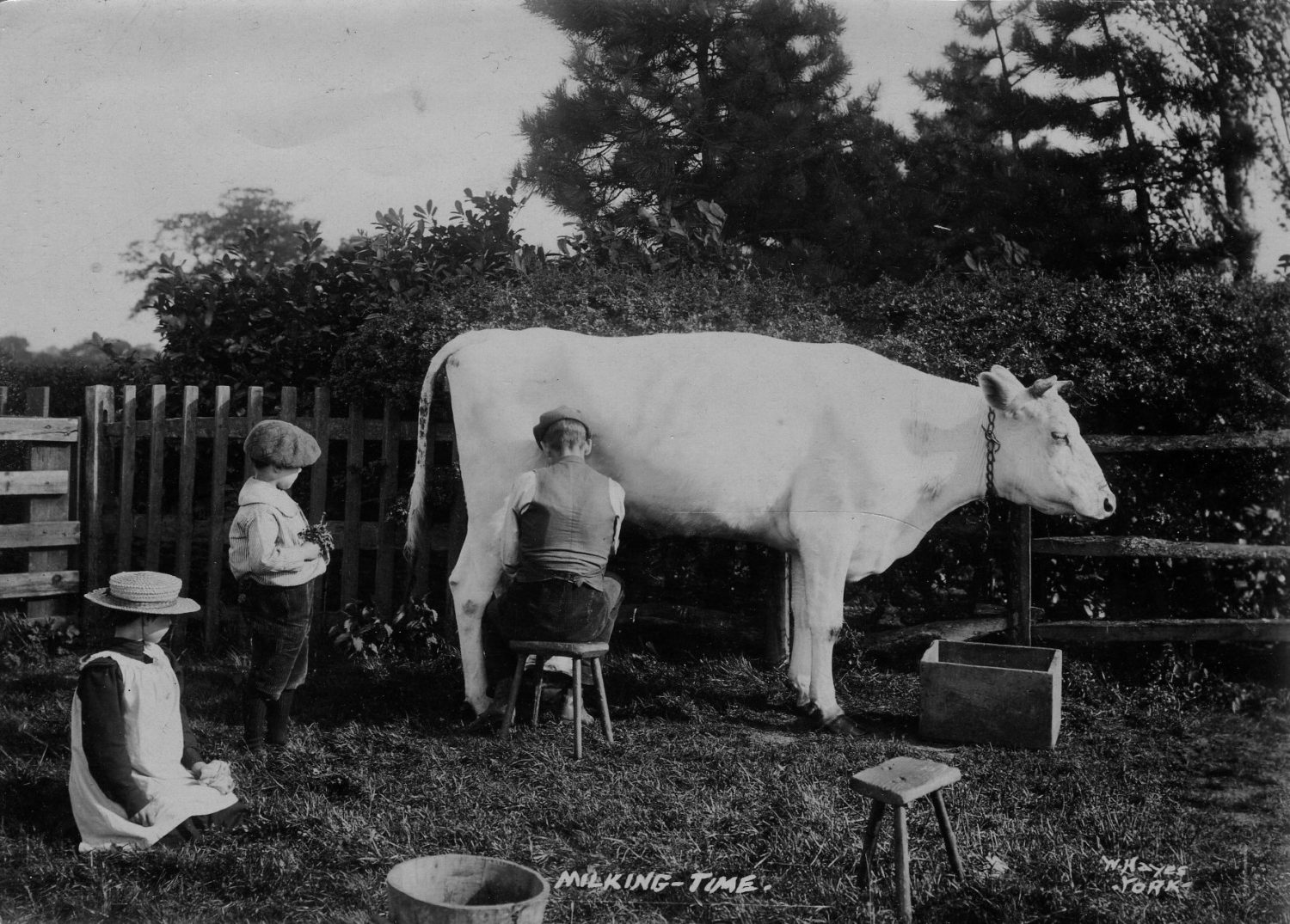
J. and W. Featherstone are here pictured with their hay cart and horses on Tenter Hill. The process of making hay started with cutting the grass, leaving it to dry out, and occasionally turning it by hand with a rake. It was then gathered up, as can seen in this photograph. Haystacks were then formed, where the hay could be left to compress and dry out.
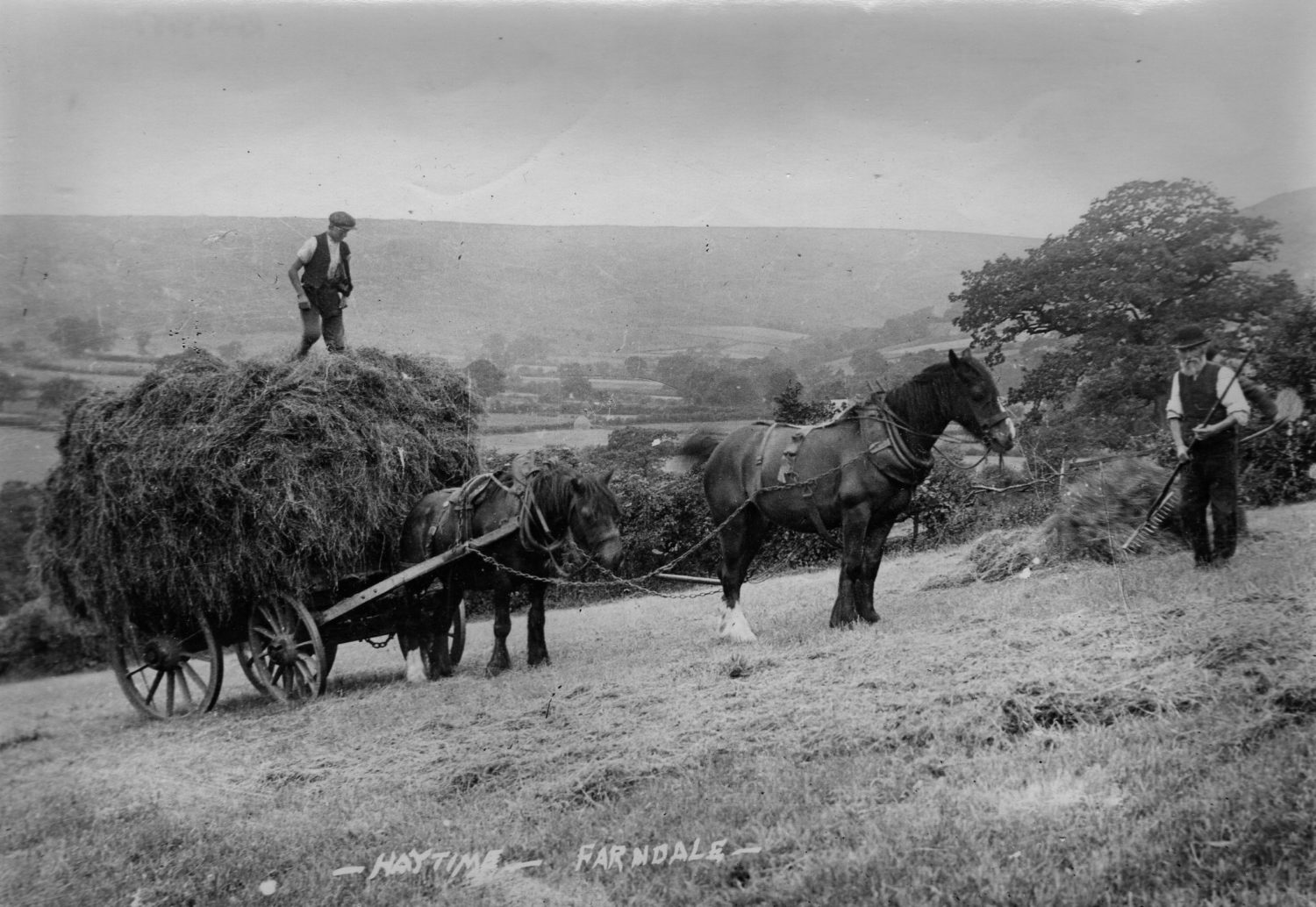
Two women are pictured feeding their flock of hens, wearing Victorian dress, and keeping a close eye on their black cat! Much like cows and sheep, chickens were also herded on foot. It was not uncommon to see large flocks of the birds being walked from village to village.
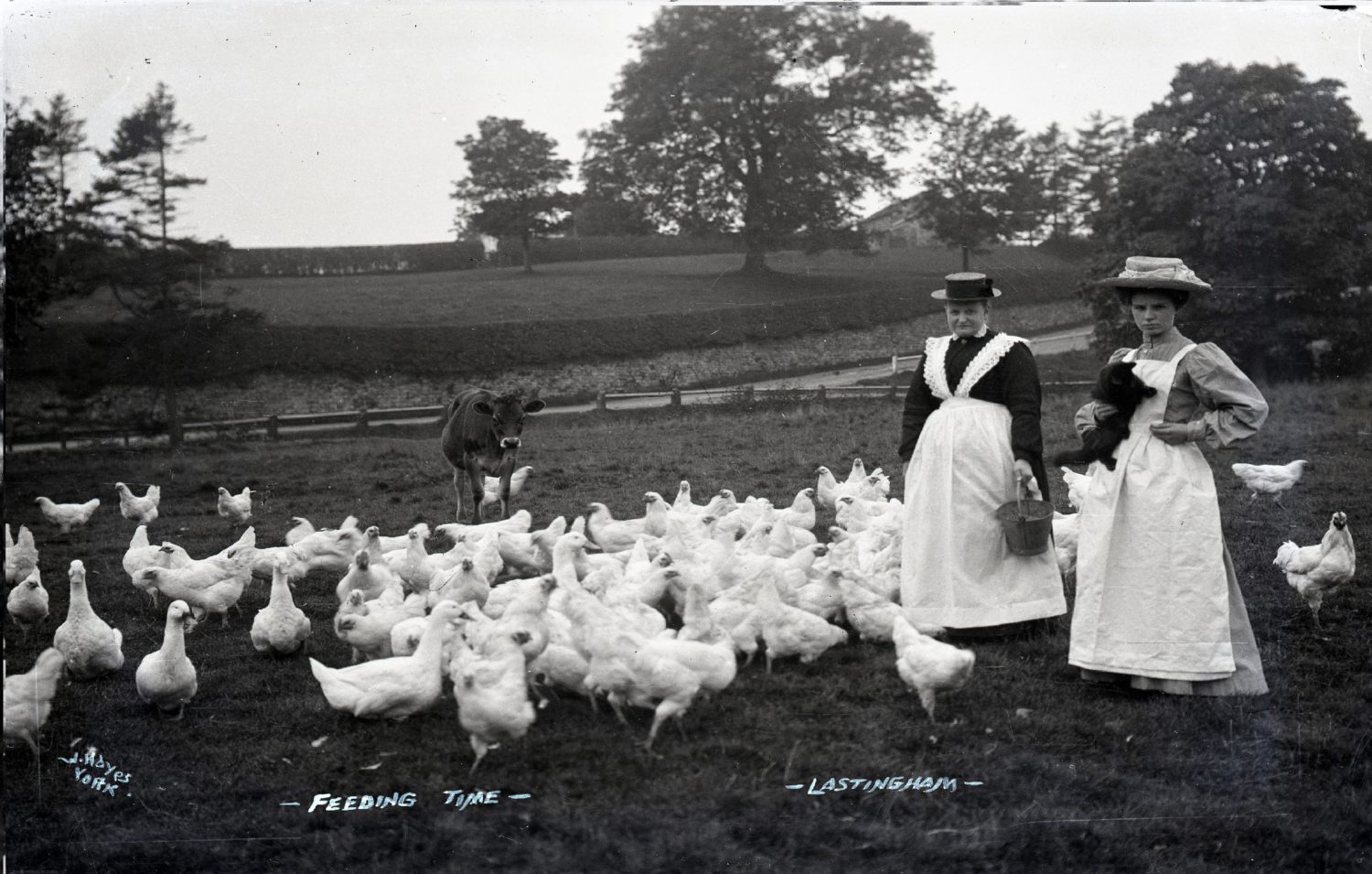
This photograph of harvesting in Rosedale shows the different stages of the gathering process. To the right of the image a man can be seen with his scythe, cutting down the corn. Men can also be seen collecting up bundles, otherwise known as a sheaf. In the background, these sheaves can be seen piled together to allow them to continue to ripen and keep dry.
